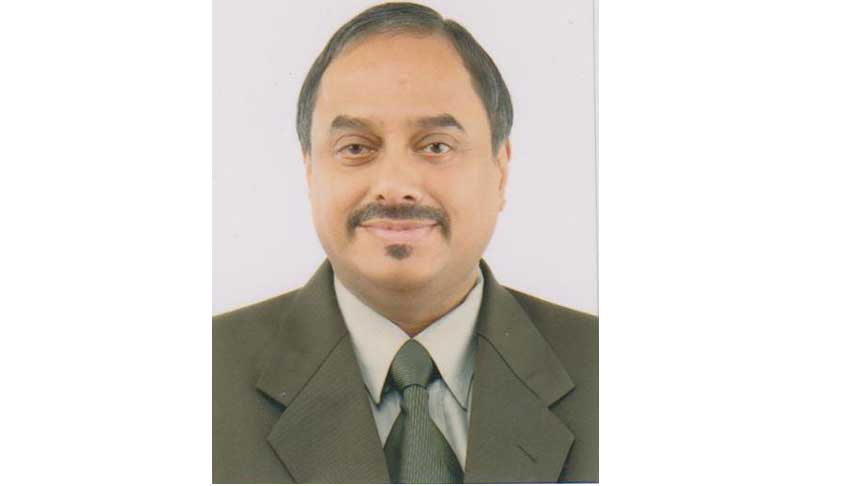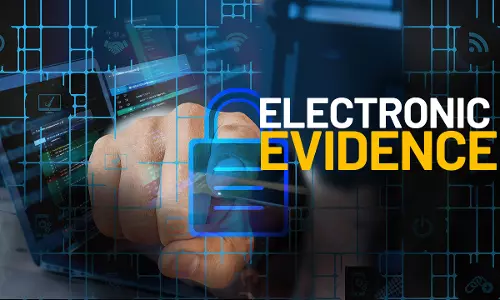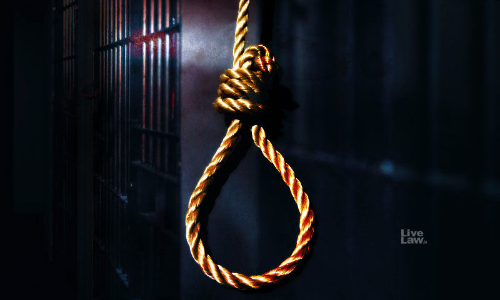
The term “fourth estate” comes from the Reporter's gallery in the House of Commons of the British Parliament. The said expression is currently issued to mean the journalistic profession and the news media. The origin of the term “fourth estate” is attributed to Edmund Burke, a British orator, writer and statesman born in Ireland in the year 1729. Burke is said to have used the...
The term “fourth estate” comes from the Reporter's gallery in the House of Commons of the British Parliament. The said expression is currently issued to mean the journalistic profession and the news media. The origin of the term “fourth estate” is attributed to Edmund Burke, a British orator, writer and statesman born in Ireland in the year 1729. Burke is said to have used the term “fourth estate” in a parliamentary debate in 1787 on the opening of the press reporting of the House of Commons of Great Britain. The other three traditional estates of the British Parliament are the Lords spiritual, the Lord Temporal and Commons. The corresponding three estates of French States-General are the Church, the nobility and the townsmen (the commons).
What is Trial by Media?
The expression “trial by media” itself is a misnomer. The word “trial” has not been defined either by the Code of Civil Procedure, 1908(“C.P.C.” for short) or the code of Criminal Procedure, 1973 (“Cr.P.C.” for short) which are the basic statues governing the trial of civil and criminal cases by the respective courts in India. Black's Law Dictionary (9th Edition) gives the word “trial” the following meaning:-
“a formal judicial examination of evidence and determination of legal claims in an adversary proceeding”.
Sec. 2(7) of the Bankers' Books Evidence Act, 1891 defines the word “trial” as under:
“trial means any hearing before the Court at which evidence is taken”.
Thus, “trial” ordinarily means a proceeding before a Court of justice. If so, there cannot be a trial by the media. But these words are often used to denote an exercise undertaken by the media virtually taking up the role of a judicial forum for which such exercise has been earmarked by the laws of the land. The Supreme Court of India has had occasion to note the consequence of “trial by media” in the following words:-
“The impact of television and newspaper coverage on a person's reputation by creating a widespread perception of guilt regardless of any verdict in a court of law. During high publicity cases, the media are often accused of provoking an atmosphere of public hysteria akin to a lynch mob which not only makes a fair trial impossible but means that regardless of the result of the trial, in public perception the accused is already held guilty and would not be able to live the rest of their life without intense public scrutiny”. (Vide para 293 of R.K. Anand v. Delhi High Court -(2009) 8 SCC 106).
In State of Maharashtra v. Rajendra Jawanmal Gandhi -AIR (1997) 8 SCC 386 = AIR 1997 SC 3986, the Apex Court observed as follows:-
“A trial by press, electronic media or public agitation is very antithesis of the rule of law. It can well lead to miscarriage of justice”.
But when a sensational criminal case comes up for investigation before the police or for adjudication in a subsequent trial before the Court, the usual question asked is “Is the media expected to be a silent spectator insensitive to the happenings around and failing to quench the public curiosity about the case?”.
A few media excesses
We see newspapers and news channels competing with each other and giving their own version of the facts of a given case. We are not unfamiliar with accusations that the media itself has been responsible for unduly sensationalizing a case which is otherwise a bland and unimportant case. We have seen the media highlights of a couple of Maladivian citizens of the fair sex in the “ISRO espionage case” and the final outcome of that case. Were the two ladies who were characterized in some quarters as “sex bombs” avenged for the loss of the reputation which they suffered? Has the scientist of the prestigious Space Research Organization been adequately compensated for the mental agony and slur on his credentials? Even a public apology by those responsible for spreading the spicy story cannot efface the blot on the reputation of such personalities. This is because there will always be a lingering doubt in the public mind whether the subsequent extrication of the person is really true. The social ostracism faced by the scientist on account of the adverse media coverage will be almost irreversible notwithstanding the acquittal by the Court. Who is responsible for the creation of such prejudiced public opinion about these individuals in whom the law presumes good reputation and what, if any, is the accountability of those agencies for the creation of such negative bias? Even if it could be said that the thirst for sensational news is a natural human desire, can investigative journalism quench that thirst without any risk or cost?
The need for a vibrant and fearless media
People are the only censors of their own representatives who rule them and, therefore, people should be given complete information of the affairs of the representatives through the channels of public domain. It is true that a free, independent and fearless Press is the sine qua non of a vibrant democratic society in a free country where there is no dictatorship or throttling of dissemination of news. It is the right to know of the public which is served by the print and electronic media. Quoting from 1988 (3) All E R 545, the High Court of Kerala In Re M.V. Jayarajan -2011 (2) KLD 767 observed thus:-
“The existence of a free press is an inevitable necessity in maintaining parliamentary democracy. The Press occupies an unenviable position because the media are the eyes and ears of the general public. They act on behalf of the general public. Their right to know and their right to publish is neither more nor less than that of the general public for whom they are trustees”.
The above case was one in which the media was both appreciated as well as criticised. Appreciated for the salutary role in bringing the issue of contempt of court to the public domain. Criticised for its role in holding a discussion and public debate of the issues which were subjudice.
Freedom of the Press is thus a derivative of the citizen's fundamental right to freedom of speech and expression as enshrined in Article 19 (1) (a) of the Constitution of India. This means that the media does not enjoy any power larger than that of the general public whom they represent. In other words, the media is subject to all the restrictions which every member of the general public is subject to. In fact, the journalist is saddled with more responsibility since what he says or writes is likely to influence the public to a greater degree than what an ordinary citizen says or writes.
Limitations on the freedom of the media
A free Press does not necessarily connote a licence without any restriction whatsoever. While reaching the information to the general public the media has a duty to ensure that such information is accurate and does not impinge upon the rights of others. Those who treasure the liberty of speech and expression should recall that the said liberty is constitutionally hedged in by the limits laid down in Article 19 (2) of the Constitution of India. Those limits flow, inter alia, from -
a) the right to reputation
b) the right to privacy (decency and morality) c) the law of contempt of Court etc.
Thus, if any person (including the Press) while criticising another, indulges in libel or slander, he will be answerable in law for such offence both under the civil as well criminal law. Likewise, under the guise of freedom of speech and expression, no agency is entitled to pry into the privacy of individuals and publish the same. There may be sex hungry individuals peeping through the ventilator into the bedroom of others to derive some sort of perverted pleasure. But if they were to transfer into a camera whatever they have perceived and publish the same, the law is above them ready to make them answerable for the same. Similar is the case with journalistic adventures calculated to derail the on-going trial before a court of law. Such exploits may be counter-productive and those who indulge in such parallel trials will have to be accountable to the law of contempt of courts.
The Difficulties of the media victim
Of course, our system is such that it does not, unless invoked, automatically swing into action and remedy the victim. Notwithstanding the tall claims about easy access to justice, everyone knows how expensive and unavoidably time consuming it is to have a redressal of one's grievances through the adjudicatory forums. The observations by a Division Bench of the Delhi High Court in Suo Motu proceedings -2009 (1) KLD 133 decided on 21-08-2008 are apposite in this context. This is what the Delhi High Court said:-
“We do appreciate that in respect of some cases (largely criminal cases) the justice delivery system in our country progresses virtually at a snail's pace and often an innocent person has no real remedy available to him, if he in framed in a matter, or is subjected to a 'trial by media'. As a result, seldom does anyone approach a Court of law for relief either by way of an injunction or for damages in a case of 'trial by media'. Such being the reality, we are of the opinion that the Courts have a great responsibility and, therefore, need to be far more vigilant and pro-active in protecting the rights and reputation of an individual from an unwarranted 'trial by media'. In a sense, the Courts have to energize the rule of law. While this may add to the burden of our criminal Courts, we are of the view that it is imperative for the Courts to protect a citizen from what may appear to be victimization. This is certainly the duty if not an obligation of Courts. This is all the more important in a pending matter. For example, if a person is arrested on the suspicion of having committed a crime, it is not the function of the media to 'declare' him (by implication) innocent or guilty. That is within the exclusive domain of the judiciary. But if the accused is subjected to a 'trial', either through the print or audio-visual medium, it may subconsciously affect the judgment of the Judge, and that may well be to the prejudice of the accused, who is, in our justice delivery system, presumed innocent until proven guilty. In such a situation, the Judge must be pro-active by restraining the media from carrying out a parallel trial. Otherwise our criminal justice delivery system will be completely subverted. Failure to do so would result in an unfortunate situation arising in some cases as will be evident from what we discuss herein below”.
The Passion for Publicity
Who does not like publicity and media coverage? Basically it is the patent or latent yearning for exposure or to catch attention and appreciation which induces man to come out of the shell of introversion, if any, and show himself off, whether it be a public speech or a poetic flourish or a literary composition or a painting or a sculpture or music or dramatic performance or acting or mimicry (the art of aping others including animals by imitating the style, gait, voice, mannerisms etc.). No doubt, there could be mercenary motives as well behind such exhibits. The truth is that ordinarily no one chooses to remain anonymous unless it be to indulge in an act of vilification. The creativity in him is bound to surface. It is this weakness or thirst for publicity which is exploited by the sharper stuff including the media to their advantage both for legitimate or illegitimate ends. In the unhealthy competition to sensationalise individuals, matters and events, truth and reputation of fellow human beings are the usual casualties. The choice of the target and the degree of aggressiveness (all under the guise of independence and fearlessness of the Press) have reached such alarming proportions that the forbidden frontiers are very often forgotten or conveniently ignored.
The Concept for Fair Trial before a Judicial Forum
Criminal law has a purpose to serve. Its object is to suppress criminal enterprise and punish the guilty. (Vide State of Kerala v. Narayanan Bhaskaran -1991 (2) KLT 217 = 1991 Crl.L.J. 1238). It is through the medium of the criminal court and governed by the procedure laid down in the Cr.P.C. that the trial of persons charged with criminal offences, is being held. The law, flowing primarily from Article 21 of the Constitution of India, guarantees “fair trial”. A fair trial has two objects in view. It must be fair not only to the accused but also to the prosecution. The trial must be judged from this duel point of view. (See T.H. Hussain v. M.P. Modkakar -AIR 1958 SC 376). It is, therefore, necessary to remember that a Judge does not preside over a criminal trial merely to see that no innocent man is punished. A Judge also presides to see that a guilty man does not escape. One is as important as the other. Both are public duties which the Judge has to perform (See Krishnan v. Krishnaveni -AIR 1997 SC 987). A miscarriage of justice may arise from the acquittal of the guilty no less than from the conviction of the innocent. If unmerited acquittals become the general rule they tend to lead to a cynical disregard of the law (Vide Shivaji Sahebrao Bobade v. State of Maharashtra -AIR 1988 SC 1998; Gangadhar Behera v. State of Orissa -(2002) 8 SCC 381= AIR 2002 SC 3633). A criminal trial is meant for doing justice to three entities, namely, the victim, the accused and the society at large. See Ambika Prasad v. State (Delhi Administration) - (2000) 2 SCC 646 = AIR 2000 SC 718). Public interest demands that criminal justice is swift and sure, that the guilty is punished and the innocent is absolved in a fair and impartial trial while events are still fresh in the public mind (See M.S.Sheriff v. State of Madras ¬AIR 1954 SC 397=1954 Crl.L.J. 1019 -Coram¬5). One of the cardinal principles which should always be kept in mind in our system of administration of justice in criminal cases is that a person arraigned as an accused is presumed to be innocent until proved guilty by the competent criminal court. Another golden thread which runs through the web of administration of justice in criminal cases is that if two views are possible on the evidence in the case -one pointing to the guilt of the accused and the other to his innocence, the view which is favourable to the accused is to be accepted. (See Nishar Ali v. State of U.P. -AIR 1957 SC 366; Kaliram v. State of Himachal Pradesh -AIR 1973 SC 2773; Sheo Nandan Paswan v. State of Bihar -(1983 (1) SCC 438 = AIR 1983 SC 194). The above proposition is founded on the principle that the benefit of doubt should always be extended to the accused and not to the prosecution. That is why in cases where Court has no concrete evidence before it to record a conviction against the accused and the Court only entertains a suspicion that the accused may be the culprit; the Court will not convict the accused but would give him the benefit of doubt. In such a case, it could also be said that the prosecution was not able to prove the guilt of the accused beyond reasonable doubt. In a criminal trial the burden to prove the case alleged against the accused, (except where there is a departure made in a given statute) is always on the prosecution and the judicially settled yardstick to discharge the said burden is by proof beyond reasonable doubt. But these are not the criteria adopted by the media. For the journalist, mere suspicion or hearsay evidence or alleged confession by the so called accused to the police (which is inadmissible in evidence except in cases covered by Section 162 (2) Cr.P.C.) are more than sufficient materials to bolster up a 'scoop' and serve it to the unsuspecting public as a “breaking news”. Such stuff will not stand the scrutiny before a criminal Court.
Restrictions on Reporting Issues which are Sub Judice
It is in this area that the media comes in conflict with the judiciary. While a free Press is indispensable for the smooth functioning of the democracy and courts are open to the public and, therefore, the administration of justice also should be open to public scrutiny which includes the freedom of the media as well to report court proceedings, such reporting can be made only subject to the restrictions imposed by the legal system. This will help the smooth functioning of the democracy and can thereby balance the power vested in each organs of the State and also the fourth estate in ensuring and upholding the rule of law. Where a judicial proceeding (including a trial) is imminent or pending before a court of justice, there is generally a prohibition against publication and discussion of the subject matter which is sub judice. “Sub judice” is a Latin expression which means “under a Judge“ or “under judicial consideration “. The settled view in this connection as propounded in Government Pleader v. Mathayi Manjooran -1959 KLT 102; C.G. Janardhanan v. T.K.G.Nair -1960 KLT 792; Kochu Moideen v. Nambissan and Others - 1969 KLT 513 and other cases, has been that in criminal cases in order that a matter becomes “sub judice”, it is sufficient if a crime case has been registered, investigation started and proceedings in Court are imminent and that editing, printing or publishing of news in such manner as to cause prejudice affecting a fair trial amounts to contempt of court. But, some ambiguity has been introduced in the Explanation to Sec. 3 of the Contempt of Courts Act, 1971 with regard to the stage at which a matter can be considered to be “pending”. The said Explanation would state that in criminal proceedings under the Code of Criminal Procedure, 1899 or any other law in force (necessarily at the commencement of the Contempt of Courts Act, 1971) a criminal proceeding can be said to be pending only when the charge sheet is filed or when the Court issues summons or warrant or takes cognizance of the matter where ever applicable.
This aspect has been discussed in the 200th Report of the Law Commission. The then Chief Justice of India Mr. Justice K.G. Balakrishnan in an Article on this subject and reported at page 1 of the Journal Section of (2010) 6 SCC has opined that some clarification may be necessary as to what the expression “pending” means. In my humble view the earlier position remains unaffected by the said Explanation. In the first place, taking a hyper technical view, it could be said that the present investigation is not under the Code of Criminal Procedure, 1899 but under the Code of Criminal Procedure, 1973. Secondly, the concept of fair trial is not confined to trial before the Court. It encompasses the stage of investigation as well so as to include fair and speedy investigation within the ambit of fair trial. Any different interpretation can lead to disastrous consequences. Supposing a case is still in the crime stage (i.e. under investigation) then will it be open to the media to take shelter under the Explanation referred to above and escape an action for contempt of court on the ground that there was no case “pending” before Court when the offending report was made and, therefore, the offending report (which is otherwise derogatory to the parties and the concept of fair trial and which has a tendency to interfere with the due course of justice causing prejudice in public mind) does not constitute contempt of Court ? In my opinion, it will be no defence for the publisher of an offending report to contend that whatever he did was at the investigation stage and not at a stage when the case was pending before Court. To my limited knowledge this aspect of the matter has not come up for resolution on the judicial side of the Apex Court.
Justice V Ramkumar is a retired Judge of the Kerala High Court. This is the first part of the series on Trial by Media.





